
Hot Hand Sutras: Essays and Articles by Lawrence Shainberg ’58. Shainberg’s collection of fiction and non-fiction includes previously published works and some published for the first time (independently published, $12.95).
After Camus by Jay Neugeboren ’59. This vivid portrait of a marriage spans a series of historical events, from the Vietnam War through the AIDS epidemic and Gulf War, to the Iraq War and the advent of the right-wing Le Pen movement in France (Madville Publishing, $21.95).
Turn It Up! My Time Making Hit Records in the Glory Days of Rock Music by Tom Werman ’67. Former Epic Records producer and A&R man Werman details his rocking career, which spanned more than three decades (Jawbone Press, $24.95).
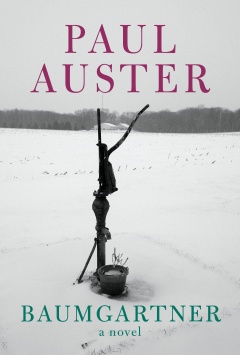
Baumgartner: A Novel by Paul Auster ’69. In Auster’s last novel, his 18th, a grieving, soon-to-be retired philosophy professor wonders why we remember certain moments and forget others (Grove Press, $27).
Paul Kontny: A Modern Artist in Europe and America by Stan Cuba ’70. Kontny’s creative output — works on paper, sculpture and oils — derived from his keen observation of people and the world around him (University Press of Colorado, $49.95).
Tricks of the Light: Essays on Art and Spectacle by Jonathan Crary ’72. Critic and art historian Crary responds to modern and contemporary art and to the transformations of 20th-century media systems and technological environments (Zone Books, $32).
The Art of Walking: A History in 100 Images by William Chapman Sharpe ’73. Sharpe’s is the first book to trace the history of walking, depicted in images from cave art to contemporary performance (Yale University Press, $30).
Radiant: The Life and Line of Keith Haring by Brad Gooch ’73. Acclaimed biographer Gooch details the life of the iconic American artist, drawing on his rich archive and extensive interviews with those who knew Haring best (Harper, $40).
Power, Image, & Memory: Historical Subjects in Art by Peter J. Holliday ’75. Holliday’s volume examines a wide variety of artistic traditions, showing how art commemorating historical events can shape collective memory (Oxford University Press, $35).
The Taekwonderoos: Rescue at Rattling Ridge by Michael Panzner ’80. George, Brianna and Jackson, kangaroo friends who are masters of tae kwon do, spring into action to save a frightened joey in trouble (Twin Unicorn Publishing, $12.99).
The Other Murder by Kevin Chapman ’83. In Chapman’s latest thriller, a disgraced cable news producer and a reporter from a small online neighborhood news outlet team up to find the connection between two seemingly unrelated murders (First Legacy Publishing, $16.99).
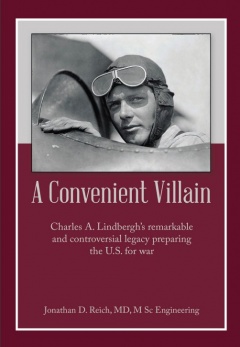
A Convenient Villain: Charles A. Lindbergh’s Remarkable and Controversial Legacy Preparing the U.S. for War by Dr. Jonathan Reich ’85. Reich combed through extensive archives to document the life and legacy of one of the most enigmatic and important political figures of the 20th century (AuthorHouse, $30.99).
A Solitary Wife and Other Stories by Lloyd Lim ’87. Lim’s second collection spans multiple genres, including crime noir, science fiction, romance, tales about ordinary people and even a one-act play (Outskirts Press, $12.95).
The Cloven: Book Two by Garth Stein ’87. The second part of Stein’s funny, dynamic sci-fi graphic novel series about James “Tuck” Tucker, a genetically modified human/goat hybrid conceived in a lab in the Pacific Northwest (Fantagraphics Books, $24.99).
The Uniform by George Guida ’89. Guida’s novel, about Alfie Bagliato, a boy from an old-world Italian-American family who dreams of a better life and ultimately becomes a cop, opens with the 1968 protests at Columbia (Guernica Editions, $21.52).
Immortal: A Novel by Ken Cavazzoni ’91. In this first novel by Cavazzoni (a former Major League Baseball player with the Cincinnati Reds), a premier athlete feels pressured to be much more than a sports hero (Koehler Books, $19.95).
The Art of Privilege by Carey Keith Green ’91. Green’s third novel features a detective investigating the murder of a wealthy Wall Street banker and his stripper girlfriend, which leads to a spiral of insider trading, blackmail and deceit (Rare Bird Books, $20).

The Book of Love by Kelly Link ’91. Link, an award-winning short story author, makes her novel debut in this magical tale of three teenagers who return from the dead and become pawns in a supernatural power struggle (Random House, $31).
International Law and Sea-Dumped Chemical Weapons by Grant Dawson ’95. Following the two world wars, governments disposed of chemical weapons in the oceans; Dawson analyzes the legal issues still involved and offers potential solutions (Oup Oxford, $28.67, Kindle edition).
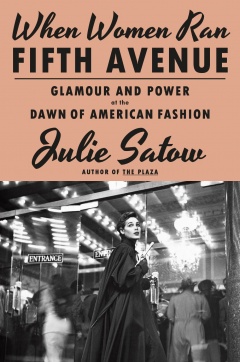
When Women Ran Fifth Avenue: Glamour and Power at the Dawn of American Fashion by Julie Satow ’96. A stylish portrait of golden-age department stores — Bonwit Teller, Lord & Taylor and Henri Bendel — and the visionary women who led them (Doubleday, $32.50).
Meet Me in Miami: 1,000 Deliveries in the Magic City by Charles (Ayres) St. Anthony ’00. St. Anthony shares his time as a delivery man in the Sunshine State, and considers the stream of bizarre news stories that gave rise to the “Florida Man” phenomenon (I.G. Studios, $14).
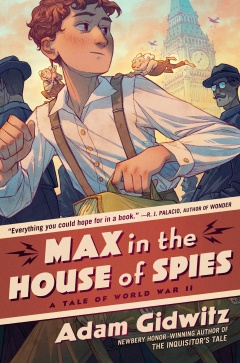
Max in the House of Spies: A Tale of World War II by Adam Gidwitz ’04. A young German Jewish boy, shipped out of Berlin to London on the Kindertransport, becomes a British spy with the help of two small spirits (Dutton Books for Young Readers, $18.99).

Mother Doll: A Novel by Katya Apekina ’05. In this meditation on motherhood, identity and war, a pregnant woman gets a strange call from a psychic medium with a message from her long-dead great-grandmother, who was a Russian revolutionary (Harry N. Abrams, $28).
A Shark Ate My Bagel: How We Built Bantam Bagels, A Memoir by Elyse Oleksak ’07. Oleksak, whose company was featured on Shark Tank, Today and Oprah’s list of “Favorite Things,” offers advice on how to start, market and grow a business (Elyse Oleksak LLC, $12.99).
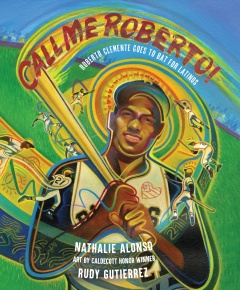
Call Me Roberto: Roberto Clemente Goes to Bat for Latinos by Nathalie Alonso ’08. Alonso’s second book is an inspirational portrait of Clemente, who endured years of discrimination to become one of the greatest baseball players in history (Calkins Creek, $18.99).
The Formula: How Rogues, Geniuses and Speed Freaks Reengineered F1 into the World’s Fastest Growing Sport by Joshua Robinson ’08 and Jonathan Clegg. Wall Street Journal reporters Robinson and Clegg detail how Formula One racing saved itself from collapse and conquered America through guile, fearlessness and reinvention (Mariner Books, $29.99).
The Stone Home: A Novel by Crystal Hana Kim ’09. In Kim’s coming-of-age story, a dark corner of South Korean history is revealed through the eyes of a small community living in a reformatory center (William Morrow, $30).
Morning After the Revolution: Dispatches from the Wrong Side of History by Nellie Bowles ’10. In this irreverent and insightful debut, journalist Bowles questions whether the progressive movement she knows and loves is actually helping people (Thesis $30).
You Get What You Pay For: Essays by Morgan Parker ’10. Parker’s deeply personal collection examines America’s cultural history and its effect on the mental well-being of Black Americans through the ages (One World, $28).
Saturn Returns by Charline Tetiyevsky ’12. The latest collection of poems by Tetiyevsky explores the astrological concept of the Saturnic return, a heralding of adulthood signaled by the roughly 29-year path that Saturn takes to travel around the sun (Potato Chip, $10.99).
— Jill C. Shomer